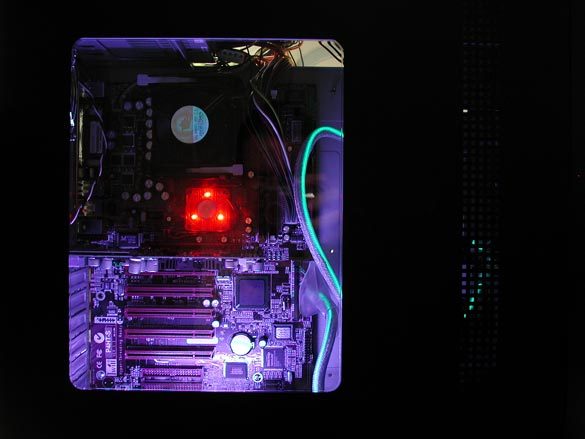The End User Pays: 13 Boards With Intel 845GE/PE
Conclusion - Asus Offers The Best Mix
Tell me your color, and I'll tell you which board you are! You might almost want to say that this was the theme of this test. The trend among motherboard manufacturers is to apply some paint, and not sparingly, either: all of the boards are painted in a specific color. All except for Asus, which still sells the boards in a classic look. If we were to rate their outward appearances, we would undisputedly give the award to Iwill. From the packaging to the individual slots, everything is in a bright red. It is a board like this that will cause quite a stir in a lit windowed case at LAN parties. The Biostar, on the other hand, is much too colorful and the DFI way too pale.
Still, it is ultimately the mixture of performance, available equipment, features and purchase price that determines whether or not a board will conquer the market.
Even well-established names with a high market share, such as Asus, Gigabyte or MSI, are no longer able to automatically demand higher prices without offering an equivalent value in return. The market leader Asus showed a positive trend; in our last test, we constantly criticized the poor features as well as the components that came with it - for an exorbitant price. Though the current boards with 845GE and 845PE chipsets are still a bit more expensive than those of the competition, the board manufacturer now includes a wide assortment of cables that would cost a pretty penny at the dealer's. This has propelled Asus to the top in this test. Right on its heels in the overall rating is the Aopen with its AX4PE Max. It is primarily the effective temperature control of the CPU and system that deserve respect. Then there are the good overclocking characteristics and comprehensive hardware features, including Serial ATA, FireWire, Ultra DMA/ 133 Raid and Dual Bios. Intel, which succeeded in including the retail segment in its focus, is also worthy of note.
There are several obvious trends at the moment: more and more case manufacturers prove that the PC has long ceased being a gray box sitting somewhere in a dark corner. So it is definitely a selling point to design the boards in an optical design that is more appealing. Furthermore, the fight for customers in the retail segment is assuming undreamed-of proportions - nearly all the components are integrated on the board, and the necessary connecting cables come with the boards. Fujitsu-Siemens chooses a different route. Both boards are perfectly made but offer no incentives in the form of features or performance for end-users. In addition to that, they are expensive - a price OEM customers don't have to pay, anyhow.
Missed badly - the companies Abit and Shuttle were unable to send a test board with an Intel 845PE or 845GE chipset for this test. For your information: Shuttle builds the legendary Mini PC, and Abit claims to be the King of Overclocking.
The current trend - a see-through case (Aopen) combined with the red Iwill along with a cool light source. The illuminated IDE cable is an additional eye-catcher.
How about this for your next LAN party: blinking chaser lights integrated on memory sockets and HD LEDs on the board. There is one more aspect, though. All that glitters is not gold - nor blinks, as in this case.
Get Tom's Hardware's best news and in-depth reviews, straight to your inbox.
Current page: Conclusion - Asus Offers The Best Mix
Prev Page Overview: Features For All Motherboards, Continued